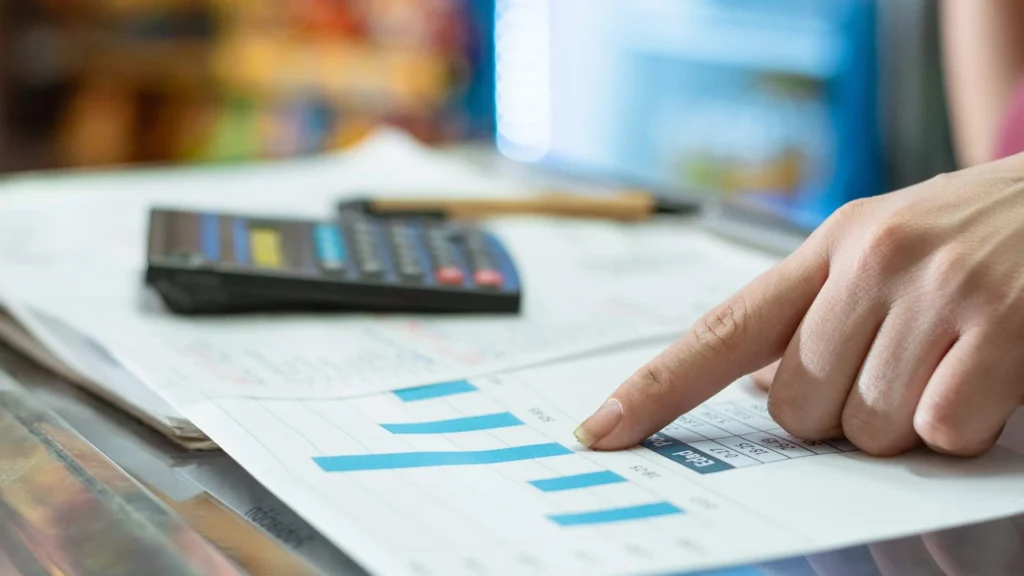Ever examined your bank statement and wondered where all your money went? It’s tough, especially with a tight student budget. From late-night snacks to textbooks, the expenses just seem to keep adding up.
But what if you could know next month’s budget with ease, using your past spending? Looking ahead how much you’ll need for rent, food, or subscriptions? Sounds cool, right? Seems magical, doesn’t it?
BudgetGPT shows you how to use transaction patterns to predict next month’s budget. It shows where you spend, finds trends, and gives tips to plan smart for the coming month. Ready to predict your money like a pro? Let’s jump in!
What Are Transaction Patterns?
Transaction patterns are recurring trends or cycles in your spending habits. These patterns could be daily, weekly, or monthly, and they usually have a set flow. Knowing them helps you manage your money well.
Here are some spending patterns:
Recurring Bills
Each month, costs like rent, bills, subscriptions, and insurance come. They’re about the same each month and vital for planning your budget.
Spending Cycles
At the start of the month, you might buy more food or fun stuff right after getting your paycheck. But at the end of the month, you might spend less as your money for the month runs low.
Seasonal Trends
Cost changes with seasons, like more heat costs in winter or travel costs in summer. Knowing when these rises happen helps you get ready.
Irregular Purchases
Sometimes, you buy stuff like new tech, clothes, or dining out. These aren’t monthly, but knowing these patterns helps to not overspend when the chance comes. Learn How to Spot and Fix Late-Night Spending Patterns.
By knowing your spending patterns, you can see the whole picture and plan well, cutting the chances of unexpected money trouble.
Why Transaction Analysis Improves Budgeting
Transaction analysis shows where your money goes. By looking at past spending, you can better guess and control your money. This makes budgeting more right and less of a stress. Here’s how checking transactions makes budgeting better:
1. Clearer Financial Picture
Analyzing past transactions shows your income and costs clearly. This shows where your money goes, on need or waste. Knowing this, you can do better on money matters. Read this to know If BudgetGPT Help You Prepare for Unexpected Expenses
2. Identifying Spending Habits
By looking at old transactions, you can see spending habits. You’ll see patterns, like more spending on weekends or monthly subscriptions. Seeing these lets you tweak your budget to stop unwelcome costs from building up.
3. Better Forecasting
Using historical data, you can predict future costs better. For example, if you know you spend more in certain areas each month, you can plan. This stops your money from running out by surprise.
4. Adjusting for Life Changes
Your expenses might change due to life updates, like moving or new classes. Studying past spending lets you adjust your budget correctly, keeping money on track.
5. Spotting Unnecessary Subscriptions
Transaction analysis helps find extras or unneeded payments. If you see payments for services you don’t use, you can stop them. This cuts useless spending and lets you use money on important stuff.
6. More Realistic Budgeting
By seeing where you regularly spend, you can make a budget that fits your real life. Instead of making guesses, transaction data helps you set doable goals, like saving more or cutting overspending. This makes keeping to your budget easier.
7. Financial Control and Confidence
Relying on data over guessing gives you more grip on your money. Transaction studies help you handle your money well, avoiding shocks and growing trust in reaching your money aims.
How to Analyze Your Transaction Patterns
Knowing how and where your money goes is key in budgeting, right? Checking your spending patterns helps you see your habits better, letting you plan smarter for the future. Here’s how to check your spending patterns well:
Collecting and Categorizing Data
Start by gathering your transaction history from your bank app. Put each buy into groups like food, bills, or fun. Look at how often you spend and when, either early or late in the month.
- Use a bank app: Many bank apps sort transactions for you. You can also take your data out for deeper checks.
- Spreadsheets: Set up categories in a spreadsheet for each type of spending. Use different columns for dates, amounts, and types.
- Track frequency: Determine what expenses occur regularly and which are periodic, so you’ll know what to anticipate.
- Organize categories: Organize your expenses into different categories, like essentials, non-essentials, and savings. This aids in recognizing patterns.
Once you’ve got your transaction records in order and sorted out, then you can start to see where the money is going and how often it’s going. Then you can make intelligent choices in the future. Here are some Tips To Use BudgetGPT to Build a Personalized College Budget.
Identifying Recurring and Variable Expenses
Next, review your spending and differentiate between which are recurring and which are variable. This is necessary because recurring spending will be very predictable from month to month. Variable spending, though, will be up to what you decide.
Regular Costs can be:
- Rent or house payments
- Subs like Netflix, Spotify
- Insurance fees
Variable Expenses can be:
- Food and shopping
- Travel costs
- Fun and free time activities
Analyzing these groups shows what you usually spend and what shifts based on what you like.
Spotting Trends and Anomalies
After sorting your buys, look deeper into your info. Try to spot trends, odd things, and what could change your plans next month.
- Spending spikes: Check when you spend more, like on holidays, sales, or trips.
- Seasonal changes: Some expenses change with the season, like clothes or home warmth. Note these to change your plan. Here’s How to Use Blitz to Plan for Seasonal Expenses.
- Unusual transactions: Sometimes, weird charges show up that can mess up your plan. Keep track of these to see if they are one-time things or not.
By knowing these trends, you can shift your plan to fit these changes, making it more fit for your real spending.

Predicting Next Month’s Budget
After looking at your transaction patterns and regular expenses, the next step is to guess how much you need next month. Here’s how to guess:
Using Historical Data for Forecasting
Guessing next month’s costs is easier if you check what you spent before. By looking at last month, you can guess what will happen next. Here’s what to do:
- Review past spending: Look at prior months. Spot bills and costs that are the same, like rent, subs, and shopping.
- Estimate monthly changes: If your electricity bill is higher in cold months, get ready for high expenses during summer. And if you plan to travel or have events, add those one-time costs too.
- Consider upcoming events: Know big days like birthdays or trips that can change what you spend. Plan before to keep on track.
- Account for debt: If you pay cards or loans, add these to your plan. Be real about what you owe.
By using past spending and adjusting for changes, you can guess your next costs. This helps you know what will come and keeps you ready.
Leveraging Automated Tools and AI
Smart tools like budget apps make guessing easier. They check your past purchases and guess your future spending. Here’s how this helps:
- Budgeting apps: Apps like BudgetGPT sort your buys, letting you see what you spend on. They use your habits to guess your next costs.
- Real-time alerts: These tools tell you when you go over or when a bill is near. This keeps you in line with your cash.
- Proactive suggestions: Some apps give ideas to save more in some groups or change your targets based on what you spend.
- Automated data collection: Rather than tracking every buy yourself, these tools sort it all from your accounts, keeping your plan updated.
Using smart tools helps you guess without problems. With up-to-date info and smart ideas, you can surely plan next month and change as needed.
Taking Action: Building a Data-Driven Budget
Making a plan from your transaction pattern is a smart way to manage your finances. Using data, you set limits and watch your progress, ensuring you keep your spending in check while saving for sudden costs. Here’s how to set up a plan:
Setting Realistic Spending Limits
After checking your transaction patterns, set clear limits for each group. If you spend too much on fun, cut back and move that money to needs or saving goals.
Monitoring and Adjusting Your Budget
Spending can change, so often compare what you spend to your plan. If you go over in one part, move money from another area to balance things and keep on track.
Forecasting Future Expenses
Use past info to guess soon costs like bills or odd buys. Guess the cost using old trends, and fix your plan to fit new changes, like a higher bill in winter.
Prioritizing Savings
When you’ve set your spending limits, think about saving next. Put some money aside each month for urgent needs, future aims, or big buys. This way helps your savings get bigger as you use the money.
Conclusion
Managing your spending can be hard, with school fees and personal expenses. But with good tools, making a budget gets simpler. Using BudgetGPT and analyzing your spending patterns helps you plan for the next month and make smart financial choices.
BudgetGPT sorts out your money by cutting down spending, finding trends, and giving tips to stay on the path. With real-time insights, you’ll handle your cash better. This lets you aim at goals, not just worry about spending too much.
Download the Blitz app now and try BudgetGPT to take control of your finances. You don’t have to know all about finance to manage your cash well—BudgetGPT backs you all the way. Keep your spending right and ready yourself for money wins!




